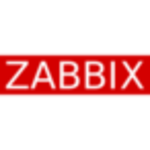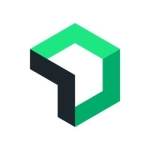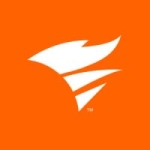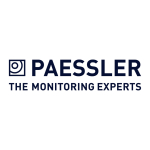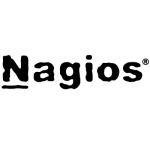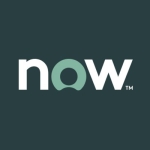What is most valuable?
Just the ability to provision the servers with storage and network everything within one interface, not having to go into multiple interfaces to provision those pieces.
For us with the flexibility that it has given to us, I would rate it very highly. But, again, this was a game changing move for us, to go into something where we could easily provision systems, easily move those workloads from one physical enclosure to another physical enclosure without having to audit enclosures. It gave us a secret pane of glass.
My team did not actually manage storage before. When we brought this in, everything flows into OneView, so we managed the storage, we managed the fiber fabric and the compute. Really the only thing that we don't manage at this point is the Cisco switches. Everything else my team actually manages within that OneView interface.
How has it helped my organization?
So, for us, just the simplicity of being able to manage everything within that single pane of glass has been just huge for us. A lot of time savings for us. Being able to take that profile, and just making a copy of it, and just deploy stuff rapidly again, as opposed to doing it one server at a time has really taken and given some of my team more time to do some of the more proactive stuff.
So, I would have to say for us, personally, at our company, it's been a ten. I think it's also made it a little simpler for us to actually deploy systems. It's also given it the ability to move workloads from one physical structure to another physical structure if they're all managed with the same OneView environment.
So, it's added some flexibility for us. We've shifted to BOOT from SAN because of it, where we're actually replicating some of that data from one data center to another and then utilizing OneView to create a profile just to bring those replicated lines back up at the second site.
What needs improvement?
Our company was actually part of a - I don't even know what they call it - but you sit down with HP, they talk to you about features that you would like to see with their next release, and then actually a few months later they brought us into the HP campus and they actually showed us some of the things they were doing with the next release of the OneView.
Some of the things that we said at that time was better ability to do firmware. So, we obviously follow a chain-management process. Within that chain-management process we have to be able to show, "Hey, here's the list of servers that need this firmware," and then also give a report afterwards saying, "Hey, here are those lists of servers and here's their firmware now, but they're up-to-date."
So those were some of the things that we were asking, it was just some improvements on reporting and then improvements on how we do the patch process, in general, for firmware and drivers and things like that. So, that's really what we were looking for, and those were things that they were showing us that there's going to be possibly capabilities in the future release.
For how long have I used the solution?
We've been on it only for about two and a half years, but it's been a game-changer for us. I really like it. It's a really good product for us.
What do I think about the stability of the solution?
We've really had very few issues with it. Initially stability, as far the application being up, has been good. We ran into a couple of issues here and there with the baselines for the firmware and not having enough space on the appliance itself to be able to have more than two baselines.
We actually work with HP, they had a way for us to expand that space where we could do more baselines, and so once that happened, we were pretty good.
What do I think about the scalability of the solution?
Scalability has been good. We've actually scaled an additional, I want to say, five or six enclosures and added it to the environment, and we've really had no issues with it whatsoever as far as just bringing it in and increasing our storage footprint, or increasing our computer footprint, or whatever it's been.
It's really been pretty seamless for us. I mean, once you get it in, it really reads all the information for you and then you've got it. So it's been good.
How are customer service and technical support?
We have used technical support, like I was mentioning with the space issue that we've had. We've used technical support just in general, OneView included, just on some of the ways that we wanted to actually do our profiles, so we could do that replication between sites. So, we did engage with them in things like that.
So I'll be honest, in my role, I'm not really doing the face-time with that. My team has not really ever come to me with any kind of issues. We actually have an account support manager from HP who is specific for the OneView environment that we own.
So typically what they'll do is they'll open up a ticket with HP, but then they'll send that information to the ASM and he'll really get things moving if things are stagnant for us.
Which solution did I use previously and why did I switch?
So, before that we just had C7000 enclosures and we were just logging into each OA and just doing profiles individually per enclosure. So, now with OneView we create the profiles, but then we have ten enclosures included into that system.
We can just move stuff where we want. We didn't have that capability before. We never linked our C7000s, so each C7000 had its own profiles and its own OA that we had to login.
How was the initial setup?
The setup was pretty straightforward. So to be honest, at the end, we brought in HP services to do the implementation of OneView. Obviously, we sat there with them and got an understanding of what they were doing and what the product did and how you installed it.
It's just basically a virtual client, so it wasn't really all that difficult to set up.
Which other solutions did I evaluate?
We actually looked at UCS and HP. We were looking for a converged environment, but we really didn't want just a canned approach to that.We had some limitations from our networking side on what gear they would allow us to use. We're a Cisco shop for networking. And, so most of the HP converge systems come with their own network and everything. We couldn't use the network.
So, we really worked with HP and they worked with us, and we actually came up with a custom converged environment where we used Cisco for the networking. But then, it's a great powerful storage and everything else is what they had.
We built a new data center. We needed something that was going to be a little more progressive than just racking a server, racking a server, building an application. We needed the capability to do site-to-site replication on not just virtual machines, but physical hardware. That's why we looked at the two systems.
To be honest with you, OneView was the deciding factor on going with HP, opposed to the other vendor, because with the other vendor, like I was saying, you had to go to the origin. This is mine. And we want something that we can just do everything in one pane and be done.
First and foremost when selecting a product, its got to fit within our environment. So, it can't be something that's kind of left out there that's just way off of what we do with standards and things like that.
We've been an HP shop for a long time. We've been in an enclosure shop for a long time. So, familiarity was another piece. Trying to teach your team, or have your team try to learn new equipment or new technologies that are not in line with what they're already doing can be a very large undertaking. I think familiarity and just a fit within our environment are a couple of the keys that we really look at.
So, I'm an X86 person. We also have an AIX environment, as well,along with Linux. They are obviously on power, so IBM for the AIX stuff. On X86, we're all HP hardware.
Obviously, we use Cisco, we use Brocade, Citrix, Microsoft. Those are our short list of vendors that we deal with a lot.
What other advice do I have?
I would just say, "Make sure you do your diligence. Make sure you look at every aspect of what you're going to be bringing in. Make sure that none of those pieces are going to be in any kind of conflict, or harder for you to manage or take care of.
Go with the one that fits your company that you can manage. There is less of a market curve for your company. At the end of the day, that's time spent on non-work, or non-proactive, or any of that stuff.
You're spending time trying to learn a new environment, or a new system when you still need to be doing work that you're doing.
So, I would just say, make sure you vet out the whole environment and not just one piece of it.
Disclosure: My company does not have a business relationship with this vendor other than being a customer.


